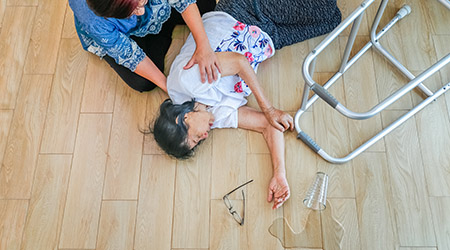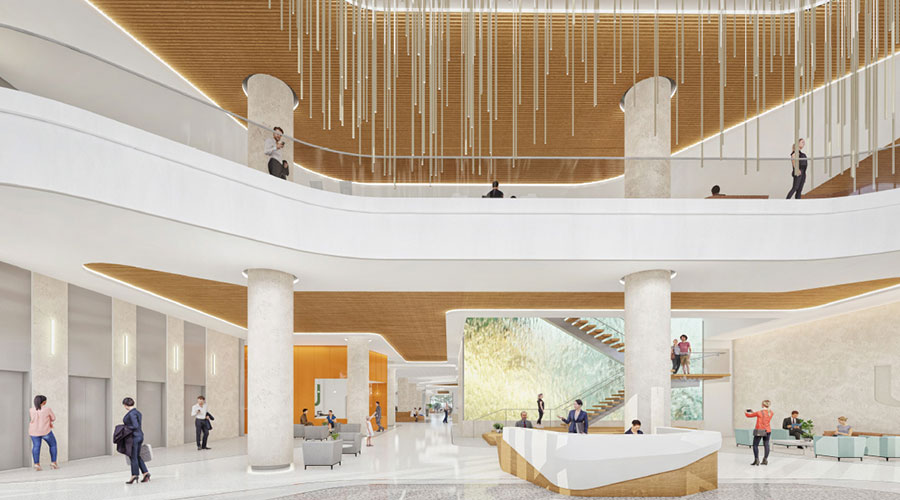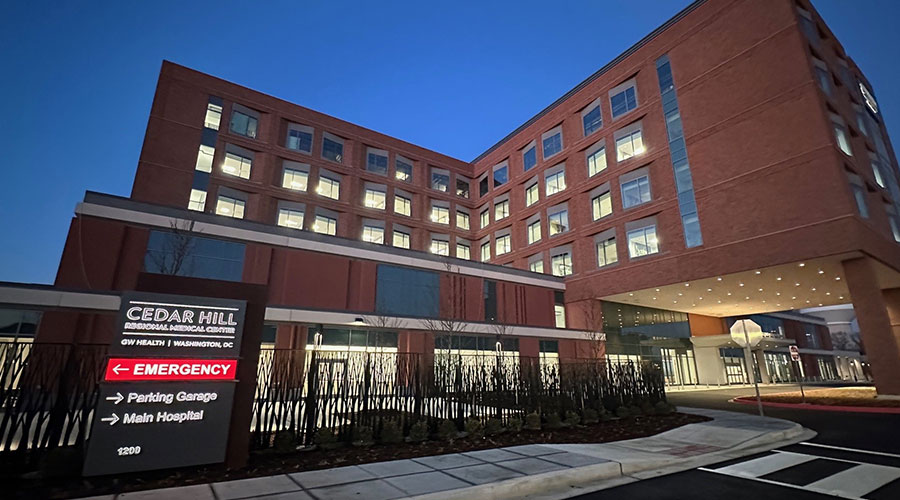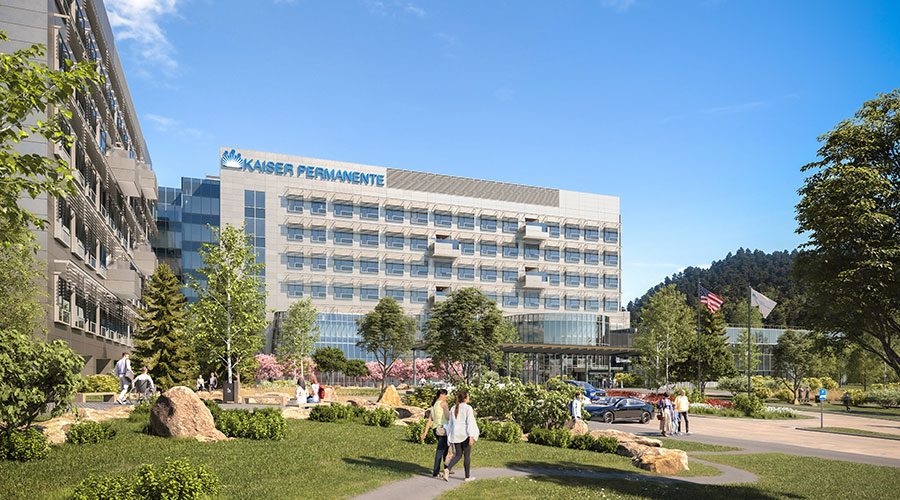Seniors living in long-term care facilities face some worrisome statistics: Between 50 and 75 percent of all nursing home residents fall each year, according to the Nursing Home Abuse Center. Alarmingly, that is twice the percentage of falls experienced by seniors living in the community.
Fall prevention remains a top priority for long-term care providers. But how can facilities managers reduce the number of slips and falls each year? While they must address several hazards — including equipment in hallways, poor lighting, and beds set too high — one crucial element of fall prevention lies directly underfoot.
Flooring is an important place to begin. Brent Johnson, chief auditor of Traction Auditing, a walkway traction auditing firm in Southlake, Texas, says there are five elements to keep front and center:
- flooring specifications
- auditing
- high-traction state
- color of flooring
- Shoes.
“The problem of slippery floors begins with the flooring specifications,” Johnson says. “All flooring should be chosen for its slip-resistant qualities before aesthetics are considered.”
Likewise, all flooring should be tested to National Floor Safety Institute (NFSI)B101 safety standards, Johnson says. This step ensures walkways have sufficient traction to prevent slips before specifying or installation.
“Additionally, all walkways in long-term care facilities should be periodically audited to be sure that maintenance protocols are not reducing the available traction of the flooring surface,” he says.
Audits in long-term care facilities include assessing patient safety in several ways. One way is the physical observance of the facility, including the condition and safety of its flooring.
To keep flooring as slip-resistant as possible, Johnson says, it should be maintained in a “high-traction state.” Products used should be certified High Traction by the NFSI.
Another important flooring consideration is color. Eyes change as individuals age, and because of this, many seniors can lose peripheral vision or experience color changes. Shades become less saturated, and it can be more difficult to see where the wall meets the floor if the two surfaces are similar shades. Likewise, using higher-contrast colors in areas like bathrooms or transitions in flooring can be helpful for residents in long-term care facilities.
Shoes are another factor residents and facility managers should pay close attention to, Johnson says.
“The second-highest percentage of slips and falls are caused by footwear,” Johnson says. “Everyone should be aware that not all footwear is ‘safe’ under all floor conditions. Long-term care administrators and their patients should be cognizant of how their chosen footwear behaves under wet conditions.”
Of course, falls in long-term care facilities are not unique. The general population experiences many slips and falls annually.
“Falls account for over 8 million hospital emergency room visits, representing the leading cause of visits (21.3 percent),” according to NFSI. “Slips and falls account for over 1 million visits, or 12 percent of total falls.”
Getting the word out about fall prevention is paramount, particularly in long-term care facilities where slips and falls can have dire consequences. Education of the public is a high priority.
“With slips, trips, and falls at a pandemic rate in our senior population, it is more important than ever to educate them about how to prevent their occurrence,” he says. “Information and education are the keys to prevention.”
Joy Choquette is a Vermont-based freelance writer.

 Design Plays a Role in the Future of Healthcare
Design Plays a Role in the Future of Healthcare Cedar Hill Regional Medical Center GW Health Officially Opens
Cedar Hill Regional Medical Center GW Health Officially Opens Designing Healthcare Facilities for Pediatric and Geriatric Populations
Designing Healthcare Facilities for Pediatric and Geriatric Populations Kaiser Permanente Announces New Hospital Tower at Sunnyside Medical Center
Kaiser Permanente Announces New Hospital Tower at Sunnyside Medical Center Building Disaster Resilience Through Collaboration
Building Disaster Resilience Through Collaboration